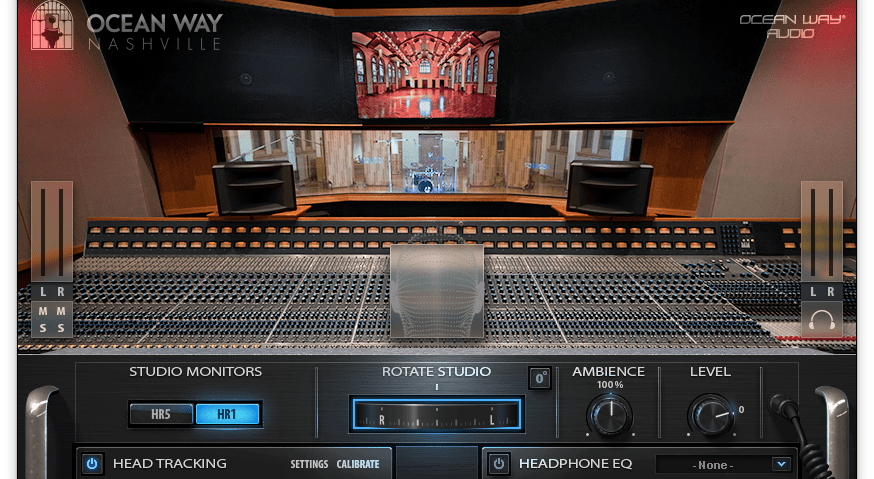We look at the science behind Waves’ new 3D audio plugin, Nx: Ocean Way Nashville.
We don’t listen in 2D. Thanks to millions of years of evolution, our ears are able to detect sound in three dimensions. We use this to locate objects, determine the distance to a sound source, and more. Of course, we also make use of this when we listen to speakers. We aren’t just hearing the music. We’re hearing it within the space the speakers occupy – the room and everything in it. All of this is lost, however, when we put on a pair of headphones. It reduces the sound to a two-dimensional plane within our heads. This method of listening can have its advantages but mixing is not one of them. How then, can we effectively mix on headphones?
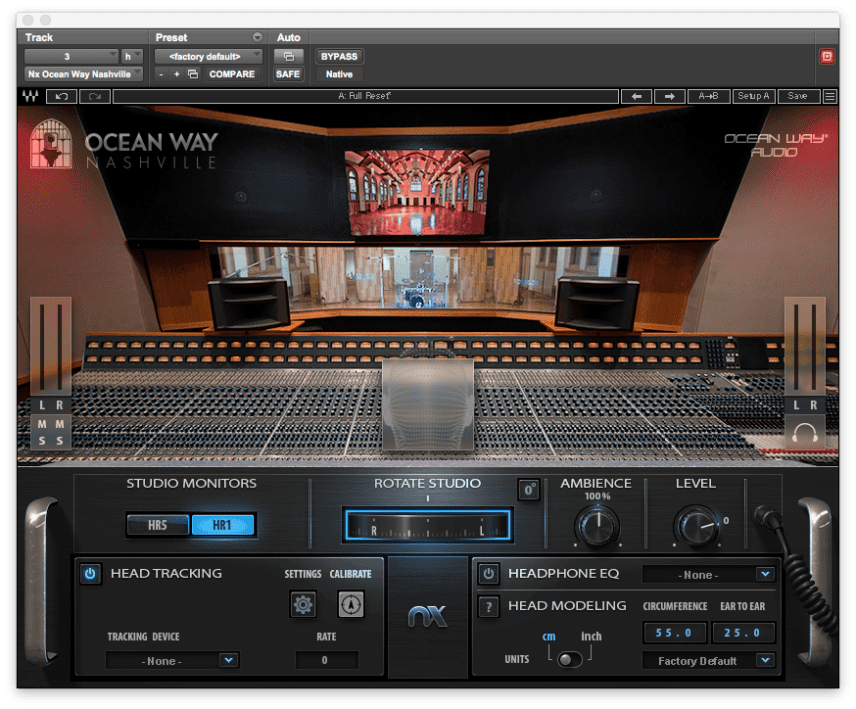
One solution is 3D audio and Waves’ Nx series of applications and plugins, including the just-released Nx: Ocean Way Nashville. A 3D recreation of the famous Nashville, Tennessee recording studio, Nx: Ocean Way Nashville models the acoustic experience of being in the studio control room. It specifically reproduces the control room’s acoustics as well as the studio’s custom Ocean Way Audio monitors. Heady stuff. Let’s see if we can get behind what’s happening.
Virtual Listening – What Is 3D Audio?
Essentially, 3D audio manipulates sound so that the listener feels as if they were present in a three-dimensional space. With Waves’ Nx technology, this applies strictly to listening on headphones. It convinces the brain that it’s hearing sounds all around even though these sounds are only coming from headphones.
There are many applications for 3D audio as presented by Waves Nx, including gaming, movies, navigation, and virtual conferences. The company even sells headphones with the Nx technology embedded inside. However, we’re going to be focusing on the use of Nx as a mixing plugin in a DAW.
Nx Technology – What Does It Do?
As Waves explains, “Today’s entertainment is on a mission to recreate the real world. Just as VR makes us feel like we are walking in a 3D environment, 3D audio recreates real-world sound in a way that surrounds you with the music, the movie or the game”. Or the music studio. Nx technology can use the headphones you already have to accomplish this.
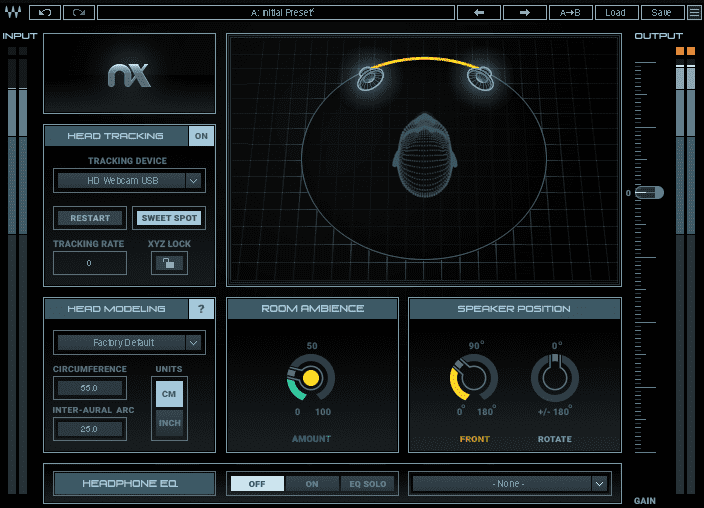
Many producers are reliant on mixing largely through headphones. Because of proximity to other residents, home studios may not allow producers to listen at full volume. Musicians and DJs are often on the road as well and have no choice but to work on music on headphones. This is less than ideal, as many elements are lost this way.
For one, spatial imaging problems can occur when the sound is being piped directly into our ears. When listening to speakers in three-dimensional space, we get channel crosstalk, with each ear hearing not only the sound from the closest speaker but also that from the other. This allows us to perceive the sound in 3D, rather than in insolation per ear.
Another issue is filtering and delays. The frequency response of the sound is affected by the shape of our ears and head and the angle at which it enters the ear. There is also a slight delay created when the sound wave reaches one eardrum before the other. This is lost when listening to headphones.
Spatial imaging problems can occur when the sound is being piped directly into our ears.
Early reflections also play a part. You may have heard this term in reference to reverbs. Early reflections are the echo of a signal created by sound waves bouncing around an enclosed space. We hear these early reflections along with the original sound itself. The brain uses these echoes to determine the source of a sound and the dimensions of the listening space.
Lastly, all of the above are affected by the motion of our heads. After all, we aren’t statues. We are often in motion when listening, even if just a tiny bit.
Nx technology addresses all of these issues by placing the listener into a virtual three-dimensional space. By capturing impulse responses, Waves can create an aural map of a room. Additionally, the sonic footprint of monitors and other sound-output technology can be measured and recreated, allowing you to feel as if you were listening to a certain set of monitors in a certain control room. Place the plugin on your master bus after any effects and Nx will transform the audio into 3D.
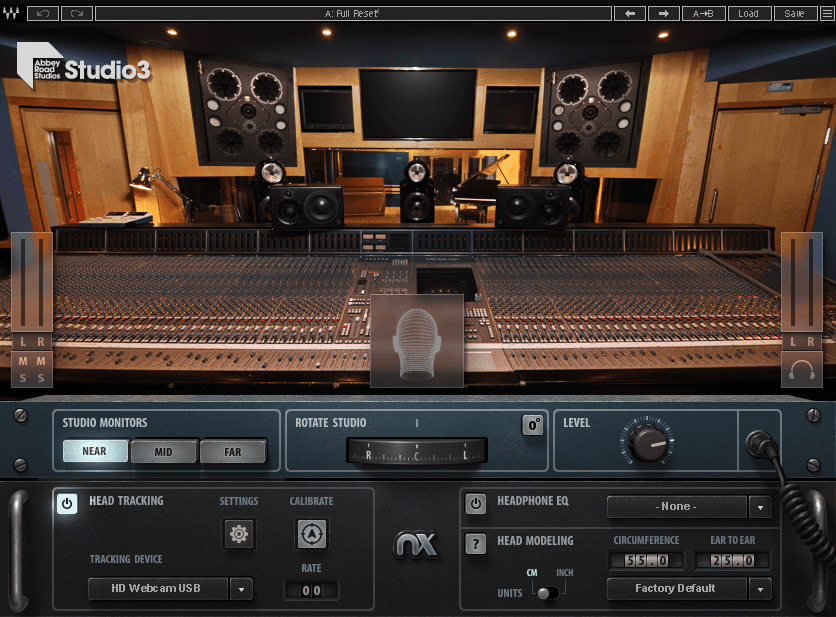
There are three Waves mixing plugins so far that use the Nx technology.
- Nx – The original. Nx creates an ‘ideal’ room for mixing through headphones.
- Nx: Abbey Road Studio 3 – Recreates the acoustic environment of the Abbey Road Studios 3 control room.
- Nx: Ocean Way Nashville – The most recent. Ocean Way Nashville models the control rooms of Ocean Way Nashville Recording Studios.
Nx: Ocean Way Nashville – Sound Worship
Ocean Way Nashville Recording Studios opened in 1996. Beyonce, Beck, and Donna Summer are just some of the artists who have recorded there. One of the most striking aspects of the studio is the renovated church tracking room in Studio A. Talk about sound worship. Used for recording orchestras for film scores and video games, it’s an exceptional room, spacious and high ceilinged. The adjacent control room and its custom monitors are also the stuff of legend, and they have been modelled in Nx: Ocean Way Nashville under the supervision of studio founder Allen Sides.
By making use of recorded impulse responses captured in the control room, the plugin models the physical space in three dimensions. This rectifies the loss of channel crosstalk you get when just listening through headphones. Likewise, filtering and delay are allowed to occur as the sound waves reach your ears at different times and angles. Of course, impulse modelling also allows for early reflections to be created.
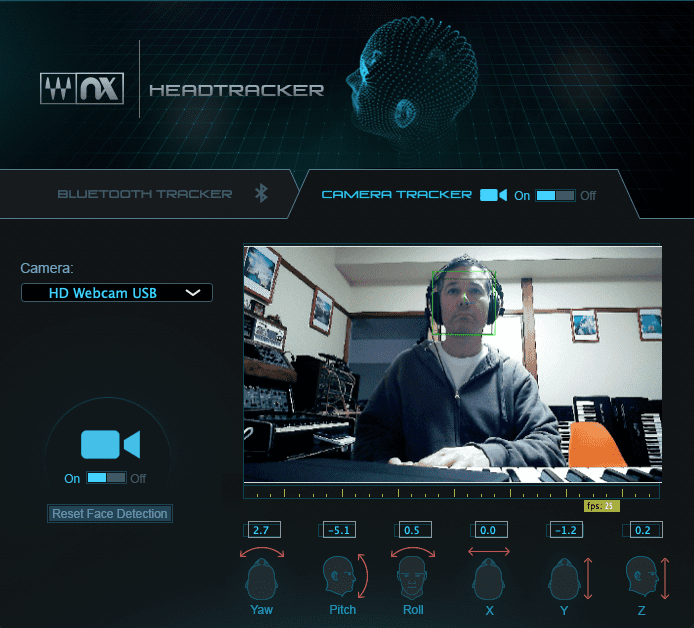
How about head motion though? This is where head tracking technology comes into play. Waves sell a dedicated head tracker but you can use a web camera instead. With it, the plugin can use determine the position of your head and adjust the sound accordingly. Head size should also be input to ensure the best response.
While listening in the Ocean Way Nashville environment, you can make further adjustments. As mentioned before, Waves modelled two different custom monitor setups, HR5 and HR1, allowing users to choose which listening environment they prefer. You can adjust the amount of ambience – essentially how much ‘room’ there is – as well as rotate your virtual head 360 degrees.
Listening Through Nx: Ocean Way Nashville – Open And Airy
The end result of all this technology is a surprisingly realistic depiction of listening in a three-dimensional space. Nx: Ocean Way Nashville imparts a spacious, airy quality to the source material, whether that be a mix or finished track. We tried a number of different songs, from nosebleed techno to dub to country (it is Nashville, after all). Songs with more acoustic qualities seemed to sound even more natural in the Ocean Way Nashville control room, although all the music we auditioned benefitted from the environment.
We then tried listening to two of our own productions, one a master and the other a mix in progress. The flaws of the self-mastered track were immediately apparent, while a run-through of the unfinished track in the Nx: Ocean Way Nashville environment immediately helped us see how to improve the EQ balance and spatial imaging.
Immersive experiences are becoming more and more common in entertainment and it’s likely only a matter of time before this approach comes to music-making and mixing as well. Producing music in a virtual environment – both visually and sonically – may soon be the norm. Waves’ Nx: Ocean Way Nashville is at the vanguard of this technology and is an exciting harbinger of things to come.
Find out more at Waves’ site. Nx: Ocean Way Nashville is available now.
